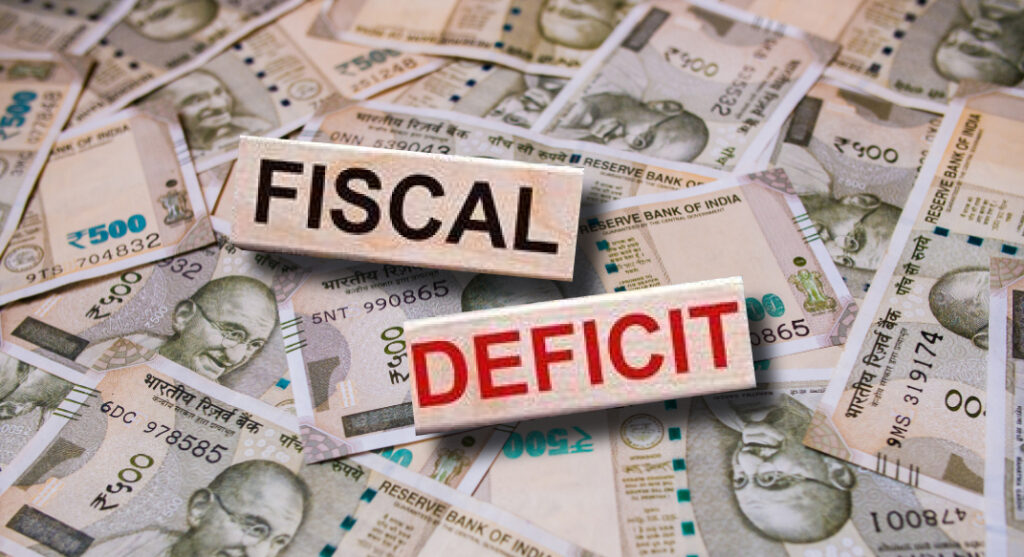Explore long-term investment opportunities in India’s volatile market, driven by political stability, economic reforms, infrastructure focus, reduced Indian fiscal deficit, and strong fundamentals.
The current market volatility might seem daunting to many investors.. However, for those with a long-term investment horizon, such market conditions can be viewed as opportunities rather than threats. Despite the fluctuations, several indicators suggest that the Indian market remains a promising investment opportunity and the reduction in fiscal deficit ensures a healthy economy. Here’s why as an investor remaining invested for long-term is justified.
Why Should an Investor Remain Invested For Long-Term in India:
- Political stability continues as National Democratic Alliance (NDA) government has clear majority.
- Economic reforms under current leadership has laid the foundation for a sustained growth.
- Focus on growth and infrastructure development expected to continue.
- Infrastructure investments stimulate immediate economic activity and foster long-term growth.
- Anticipated rate cuts by Reserve Bank of India (RBI) expected to encourage borrowing and spur economic activity.
- Robust economic fundamentals evident in GDP growth rate of 8.2% in FY24, signifying strong economic environment.
- Record-high GST collections reflect strong domestic consumption and compliance.
- Index of Eight Core Sectors showing growth of 6.2% annually in April, highlighting resilience and potential of India’s core industries.
Political Stability and Economic Reforms
One of the key factors contributing to the optimistic market outlook is the anticipated stability of the National Democratic Alliance (NDA) government. The key coalition partners have expressed solidarity in the alliance. The formation of a stable government is crucial for investor confidence, as it ensures continuity in policy-making and governance. Under the leadership of the current Prime Minister, there has been a consistent roll-out of economic policy reforms aimed at a strong growth. These reforms have laid a solid foundation for sustained economic development, making India a lucrative destination for long-term investments.
Focus on Growth and Infrastructure
The upcoming government is expected to prioritise growth and infrastructure development, which are pivotal for economic expansion. Investments in infrastructure not only stimulate immediate economic activity but also create a productive environment for long-term growth. Enhanced infrastructure leads to improved efficiency, reduced costs, and increased productivity, all of which are beneficial for businesses and the economy at large. As infrastructure projects gain momentum, sectors such as construction, manufacturing, and services are likely to experience significant growth, offering ample opportunities for investors.
Fiscal Discipline and Monetary Policy
The financial landscape is further strengthened by the government’s fiscal discipline. The recent receipt of a surplus dividend of ₹2.11 lakh crores provides the government with the necessary resources to reduce the fiscal deficit. A lower fiscal deficit is indicative of a healthier economy, as it reduces the burden of debt and interest payments, allowing more funds to be allocated towards developmental projects and welfare schemes.
In addition, the Reserve Bank of India (RBI) is expected to announce rate cuts during this financial year. Lower interest rates reduce the cost of borrowing, encouraging both consumer spending and business investments. This monetary easing is expected to provide a further boost to economic activity, driving growth across various sectors.
Robust Economic Fundamentals
The fundamental strengths of the Indian economy remain unchanged. With a GDP growth rate of 8.2% in FY24, India continues to be one of the fastest-growing economies globally. High GDP growth signifies a robust economic environment, promoting job creation, income growth, and increased consumer spending.
Moreover, the Goods and Services Tax (GST) collections have reached record highs, reflecting strong domestic consumption and compliance. The S&P Global Ratings’ upgrade is a testament to India’s improved economic stature and creditworthiness. Furthermore, the Index of Eight Core Sectors, which includes key industries like coal, crude oil, natural gas, refinery products, fertilisers, steel, cement, and electricity, grew by 6.2% on an annual basis in April. This growth underscores the resilience and potential of India’s core industries.
Conclusion
In summary, the current market volatility should not deter long-term investors. The combination of a stable and reform-oriented government, focus on infrastructure development, prudent fiscal management, and supportive monetary policy creates a favourable environment for sustained economic growth. Coupled with strong economic fundamentals, India presents a compelling case for long-term investment. As history has shown, markets tend to reward patience and resilience, and those who invest wisely during volatile times often reap significant rewards in the long run.



